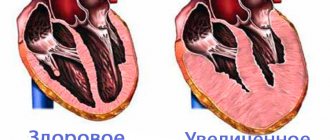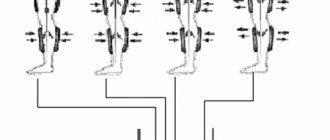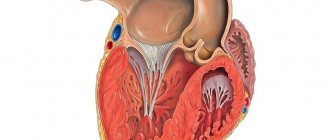Vegetative-vascular dystonia is a polysymptomatic complex consisting of various groups of manifestations. Not the least role in this is given to psycho-emotional imbalance, which can lead to functional failures of many organs. Afobazole for VSD helps to cope with these kinds of symptoms: it eliminates anxiety and feelings of restlessness, and harmonizes the state of the nervous system. With the help of Afobazole, you will significantly ease the course of the disease and be able to avoid its crises.
I am depressed!
This can often be heard from friends or read on the forum. But, as a rule, the person who makes such statements is mistaken. After all, what is meant by “depression” in a colloquial environment? Usually this simply means a short-term deterioration in mood, irritability, fatigue under the influence of circumstances. Sometimes a person is just having a “bad day” or “got off on the wrong foot” and they call it depression.
Nowadays, people are constantly faced with stress: overload at work, a frantic pace of life, inflated demands on themselves, a huge amount of information that flows from all sources. It is not surprising that many people cannot cope with so many stressors, and this can manifest itself in various symptoms:
- anxiety;
- irritability;
- fatigue;
- sleep disorders;
- obsessive thoughts;
- panic attacks.
If these symptoms are short-lived and go away on their own, do not be too upset. In most cases, just a good rest will help defeat them. But sometimes a vacation is not enough, and the body needs a little help. It is very important to choose the right medications for this.
Classification of attacks
Modern psychotherapy identifies three main categories of panic attacks:
- Spontaneous attacks. They are characterized by unexpected development and arise in a situation in which the patient feels comfortable. The spontaneous attack usually occurs first, then most patients attribute symptoms to specific places, situations or circumstances.
- Situational attacks. They arise in a certain situation or when waiting for a long time for this situation.
- Conditional-situational attacks. They are provoked by factors of a biological nature: drinking alcohol, coffee, hormonal changes. However, this connection is rather arbitrary and difficult to trace. Often a panic attack that occurs under the influence of a chemical stimulus later turns into a situational one.
- Chemically provoked attacks. Separately, panic attacks are distinguished that first occurred under the influence of psychoactive (narcotic) substances - ecstasy, LSD, “speed”, “spice”, cannabis (marijuana), psilobiscins (“narcotic mushrooms”). As a rule, such a panic attack is atypical (it contains vivid experiences of depersonalization with fear of losing control over oneself and a feeling of change and loss of one’s own personality), and concomitant autonomic disorders can be either very pronounced or not expressed at all. Often, after such a panic attack, even once suffered, a persistent fear for one’s health develops, so pronounced that daily functioning is markedly and persistently reduced - so much so that the person is practically unable to work.
It is important to understand the cause for treatment to be successful.
What is depression really?
This is a long-term (2 weeks or more) pronounced decrease in mood, which is accompanied by several additional symptoms: decreased activity, slower mental activity, lack of joy in life. That is, if you are no longer touched by the usual joys - hobbies, family, get-togethers with friends, then this is a reason to think, monitor your condition and, perhaps, consult a doctor.
If your usual joys no longer touch you, then this is a reason to think about it and, perhaps, consult a doctor.
True depression is a serious and often severe illness that requires mandatory treatment by a psychiatrist with the prescription of special medications.
What drugs are used to treat depression?
They have a common name - antidepressants. It is worth noting that in recent years the indications for the prescription of antidepressants have expanded significantly. Numerous studies have been conducted that have shown the effectiveness of antidepressants not only for depression, but also for anxiety, sleep disorders (insomnia), neuroses and even neuropathic pain. Today, drugs from different groups of antidepressants are widely prescribed by psychiatrists, neurologists and even therapists.
The most commonly used drugs are two groups.
Tricyclic antidepressants
These are old drugs that are considered the most powerful:
- Amitriptyline is a drug with strong sedative and powerful antidepressant effects. In large doses it is used to treat severe depression, in small doses for milder disorders. It relieves anxiety well and has a hypnotic effect.
- Anafranil is a drug of balanced action, usually easier to tolerate than amitriptyline, and also relieves anxiety well. Prescribed for the treatment of depression from mild to severe, various anxiety disorders.
- Melipramine has a stimulating effect and is used to treat apathetic depression.
Selective serotonin reuptake inhibitors (SSRIs)
This is a more modern group of drugs. Their advantages are good tolerability and few or no side effects.
Often from this group are assigned:
- Fevarin has anti-anxiety and good antidepressant effects. With long-term use, it normalizes sleep if it has been disturbed.
- Zoloft is a fairly strong daytime antidepressant. Relieves anxiety and obsessive thoughts without causing drowsiness.
- Paxil relieves anxiety and is often prescribed to treat panic attacks.
There are many more modern antidepressants that have few side effects and are well tolerated:
- Ixel;
- Velaxin;
- Valdoxan;
- Trittico;
- Cymbalta and others.
But strong antidepressants are not sold without a prescription . They can only be prescribed by a doctor: a psychiatrist, a neurologist, or sometimes a therapist.
Why can't you take antidepressants without a prescription?
- Only a doctor can assess the risk of side effects for a particular patient.
- Different antidepressants have different nuances of therapeutic action. If the medicine is chosen incorrectly, at best it will not help, at worst it will harm.
- Dose selection is carried out individually. If you increase the dose too quickly on your own, you can experience a lot of unpleasant consequences.
- Cancellation should also be carried out gradually and under the supervision of a doctor. Otherwise, you risk withdrawal symptoms.
What to do?
There are a number of drugs that are sold without a prescription. They are not effective for clinical depression, but they will help cope with stress, short-term sleep disorders and irritability. With their help, you can try to ease your psycho-emotional state a little:
- Glycine is one of the most popular remedies. Prescribed starting from childhood, for stress, fatigue, emotional overstrain. Sometimes effective for minor sleep disorders.
- Afobazol . It has an anti-anxiety effect, eliminates feelings of fear, tearfulness, and irritability. It is used in the treatment of vegetative-vascular dystonia and even in alcoholism, to alleviate the symptoms of alcohol withdrawal. Not addictive. Please note that it is contraindicated for children under 18 years of age.
- Novo-passit . Quite a strong sedative for nervousness and irritability. Effective in reducing concentration, memory, and fatigue. Helps restore the nervous system during periods of increased stress.
Over-the-counter medications will not cope with clinical depression, but they can alleviate the psycho-emotional state.
- Stressitis . Well calms, relieves irritability, anxiety, improves sleep. During the treatment period, driving and other activities that require increased concentration are not recommended.
- Persen is a herbal medicine. Contains extracts of valerian, lemon balm and peppermint. Has a calming and anti-anxiety effect. It helps well with increased excitability, emotional lability, and tearfulness. Can be used in the complex treatment of mild anxiety and depressive disorders, facilitating the withdrawal of potent drugs.
- Magne B6 . Increases the body's resistance to stress. Magnesium deficiency can lead to an imbalance in the nervous system, irritability, and sleep disturbances, so Magne B6 has a positive effect in these cases.
- Tenoten . It has an anti-anxiety, calming, anti-asthenic effect, helps cope with stress and psycho-emotional stress. Relieves irritability and tension. Can be used for neurotic conditions.
What is Afobazol needed for?
Tranquilizers inherently affect benzodiazepine receptors (unlike the drug Afobazol), that is, they depress the nervous system, eliminate bad mood and nullify negativity, causing indifference. Moreover, tranquilizers can be addictive, which means that when the course ends, a “withdrawal syndrome” will appear. But don’t be afraid of the word “tranquilizer” in the description of the drug. Afobazole is a so-called “mild” or “daytime” tranquilizer. The active component of the drug actually has a tranquilizing effect, reduces severe anxiety, but does not affect benzodiazepine receptors. That is, Afobazol tablets do not suppress the central nervous system, do not cause dependence, drowsiness, muscle relaxation, do not reduce memory, do not dull emotions, and they do not have a withdrawal syndrome.
Afobazole relieves tension from the muscles of the hollow organs and reduces the manifestation of vegetative-somatic disorders (dry mouth, sweating, dizziness).
Afobazole is prescribed for the therapeutic treatment of anxiety in people over 18 years of age, which is provoked by mental disorders or external traumatic factors. If a person has self-doubt, increased vulnerability and suspiciousness, poor resistance to stress and emotional instability, then the effect of the drug Afobazol will be more pronounced.
The condition of a person taking Afobazole improves after about a week of regular use of the drug. The following effects are noted:
- anxiety and fear disappear;
- sleep improves;
- relieves nervous tension and psychological discomfort;
- the manifestation of vegetative-somatic disorders decreases;
- attention and memory improves.
When should you see a doctor?
- If a decrease in mood has been observed for more than two weeks, and attempts at self-treatment have been ineffective.
- If you have thoughts about not wanting to live or suicidal thoughts.
- If a depressive state significantly disrupts the usual course of life: you cannot work, fully communicate with your family, or enjoy what previously brought joy.
You can contact a psychiatrist confidentially. Information about the fact of treatment, not to mention the diagnosis and treatment, is a medical secret: it is not reported to work, it is not disclosed. It is better to diagnose depression on time and begin treatment than to bring it to advanced stages.
Literature
- BAUER M., PFENNIG A., SEVERUS E., WYBROW P.S., ANGST J., MÜLLER H.-YU CLINICAL RECOMMENDATIONS OF THE WORLD FEDERATION OF SOCIETIES OF BIOLOGICAL PSYCHIATRY FOR BIOLOGICAL THERAPY OF UNIPOLAR DEPRESSIVE DISORDERS PART 1: ACUTE AND CONTINUED TREATMENT OF UNIPOLAR DEPRESSIVE DISORDERS AS OF 2013//MODERN THERAPY OF MENTAL DISORDERS Number: 4 Year: 2015 Pages: 33-40
- Antidepressant therapy and other treatments for depressive disorders. Report of the CINP Working Group based on a review of the evidence. M., 2008; 215 p.
- Baklanov V.V., Anikeeva A.G., Karataeva Zh.E. METHODOLOGICAL RECOMMENDATIONS FOR DIAGNOSIS AND TREATMENT OF DEPRESSION IN HEALTH INSTITUTIONS PROVIDING PRIMARY HEALTH CARE TO THE POPULATION Syktyvkar, 2011
PsyAndNeuro.ru
We present to your attention a review translation of clinical recommendations for the treatment of panic disorder of the American Psychiatric Association, prepared jointly by the scientific Internet portal “Psychiatry & Neuroscience” and the Clinic of Psychiatry and Addiction Medicine Doctor SAN.
Panic disorder or episodic paroxysmal anxiety is a mental disorder characterized by the spontaneous occurrence of panic attacks from several times a year to several times a day and the anticipation of their occurrence, which are accompanied by certain neurovegetative symptoms. A characteristic feature of the disorder is recurrent attacks of severe anxiety (panic), which are not limited to a specific situation or circumstances and, therefore, are unpredictable.
Create a therapeutic alliance
- Be sensitive to the patient's wishes and concerns regarding treatment.
- Explain panic disorder in language the patient can understand.
- Support the patient during phases of treatment that may increase anxiety (eg anticipating side effects of medications, immersion in agoraphobic situations).
Assess the patient's condition
- Assess features of the clinical picture that may influence the treatment plan, including agoraphobia, degree of situational fear and avoidance behavior; presence of psychiatric comorbidities, including substance abuse; presence of physical health problems.
- It is necessary to determine whether panic attacks are a symptom of panic disorder or are associated with substance use, medical illness (eg thyroid disease), or side effects of medications (eg oral corticosteroids).
- It should be kept in mind that panic disorder can co-occur with many physical and mental illnesses, in particular personality disorders, substance abuse and mood disorders.
EXAMINATION OF A PATIENT WITH PANIC DISORDER
- Medical history and current condition
- Mental problems in the past
- History of non-psychiatric illnesses
- History of substance use, including illicit substances, prescription and over-the-counter medications, and other substances (eg caffeine) that may produce physiological effects and exacerbate panic symptoms
- Biography (eg key events in life)
- Social, occupational (including military service) and family history
- Medicines taken
- Previously practiced treatment
- Overview of body systems
- Mental status assessment
- Physical examination
- Appropriate diagnostic tests to identify possible causes of panic symptoms
SOMATIC DISEASES THAT OCCUR IN PANIC DISORDER MORE FREQUENTLY THAN IN THE GENERAL POPULATION
- Thyroid diseases
- Cancer
- Chronic pain
- Heart diseases
- Irritable bowel syndrome
- Migraine
- Mitral valve prolapse
- Vestibular disorders
- Allergic conditions
- Respiratory diseases
Create an individual treatment plan
- Consider the nature of symptoms, frequency of symptoms, reasons for their occurrence and associated conditions.
- To better assess symptoms, you can ask the patient to keep a diary. A diary will help assess changes in mental status and response to treatment.
- Consider the patient's nationality and cultural background when developing a treatment plan.
Assess patient safety
- Be careful when assessing your risk of suicide. Panic disorder is associated with an increased risk of suicidal ideation and suicide attempts, even in the absence of comorbid conditions such as depression.
- Decide whether the patient's safety requires hospital treatment.
ASSESSMENT OF THE RISK OF SUICIDE IN PATIENTS WITH PANIC DISORDER
- Identify specific psychiatric symptoms that are associated with suicide attempts
- Collect information about past suicide attempts, suicide and mental health of relatives, as well as current sources of stress
- Assess protective factors – reasons to continue living
- Ask about suicidal thoughts, intentions, plans, methods of committing suicide, preparation for suicide
Assess the type and extent of functional impairment
- It is necessary to find out how panic disorder harms the patient in such areas of life as work, study, family, social relationships, and leisure.
- The goal of treatment should be to minimize impairment in these areas of life.
Determine treatment goals
- Reduce the frequency and severity of panic attacks, anticipatory anxiety, agoraphobic avoidance, achieve complete remission of symptoms and return to the level of functioning that was before the illness.
- Treat co-occurring mental disorders, if present.
Monitor the patient's mental status
- Monitor any symptoms that were initially present in the patient.
- It is important to understand that symptoms may go away in stages (eg panic attacks may stop before agoraphobic avoidance stops) and that new symptoms may appear over time.
- To facilitate the assessment of the patient's condition, a scoring system can be used.
Educate the patient and, in certain cases, family members
- Tell the patient about the disease and treatment.
- Inform the patient that panic attacks are not life-threatening, are almost never harmful, are not unusual, and will subside over time. This information alone can reduce symptoms.
- The patient should be encouraged to read educational literature, brochures and websites with reliable information.
- In certain cases, family members need to be trained. You can discuss with them how the patient's condition will affect the family's life, and how relatives can help or hinder treatment.
- Encourage the patient to maintain a healthy lifestyle: exercise, sleep hygiene, and reducing consumption of caffeine, tobacco, alcohol, and other potentially harmful substances.
Coordinate your work with other doctors
- Maintain communication with other professionals treating the patient.
- Ensure that the patient's physical health has been assessed (by a psychiatrist or other specialist) to rule out physical causes of panic symptoms. Extensive and specialized examination for physical causes of panic attacks is usually not indicated, but can be carried out based on the individual characteristics of the patient.
Ensure patient adherence to treatment
- If possible, find out what may reduce the patient's adherence to treatment and work with the patient to minimize the impact of these factors.
- Encourage the patient to articulate his fears related to treatment.
- Explain to the patient when to expect improvement to prevent premature cessation of treatment.
FACTORS WEAKENING COMMITMENT TO TREATMENT
- Avoidance behavior as a manifestation of panic disorder
- Logistical obstacles (eg economic factors, travel difficulties, child care)
- Cultural or language barriers
- Problems communicating with a doctor
- A short-term exacerbation of anxiety associated with treatment (eg due to side effects of medications or exposure to something that triggers fear)
Work through the issue of possible relapse with the patient
- Reassure the patient that symptoms may vary until remission occurs.
- Once remission occurs, provide the patient with a plan for dealing with symptoms that may persist or recur.
Decide where the treatment will take place
- Treatment is usually carried out on an outpatient basis.
- In some situations, hospitalization is necessary, such as high risk for suicide or substance intoxication, to treat severe panic disorder with agoraphobia when outpatient treatment is not effective or feasible.
- Home visiting is an option for working with patients with severe agoraphobia who have difficulty leaving the house.
- In cases where access to mental health care is difficult (eg in remote areas), telephone or Internet-based treatment may be considered.
Choose a treatment method
- The effectiveness of antidepressants (SSRIs, SSRIs, TCAs) or cognitive behavioral psychotherapy (CBT) as the initial treatment of panic disorder has been proven in many randomized controlled trials. If there is no associated mood disorder, benzodiazepine monotherapy can be used as initial treatment.
- One type of psychodynamic psychotherapy, panic-focused psychodynamic psychotherapy (PAPP), has been shown to be effective in one randomized controlled trial and can be used as initial therapy.
- There is no basis to recommend one pharmacological or psychosocial approach as superior to another, or to recommend combination treatment over monotherapy, although combinations may be helpful in certain cases.
- If a pregnant woman, breastfeeding or planning a pregnancy has panic disorder, psychosocial interventions should be used instead of pharmacotherapy. Pharmacotherapy can be used, but its benefits and risks should be discussed with the patient, her gynecologist and, if possible, her partner. When discussing this topic, one should raise the issue of the possible risks that untreated panic disorder and concomitant mental disorders pose to the patient and her child.
FACTORS TO BE CONSIDERED WHEN CHOOSING INITIAL TREATMENT
General factors
- Patient Preferences
- Risks and benefits of treatment, including the risk of side effects from medications
- Patient treatment history
- Presence of concomitant somatic and mental illnesses
- Cost of treatment
- Availability of treatment
Factors in favor of psychosocial treatment
- The patient prefers non-drug treatment
- The patient is willing to spend time and effort on this type of treatment
- The patient is a pregnant woman, breastfeeding or planning pregnancy
- The patient has a comorbid personality disorder
Factors in favor of pharmacotherapy
- The patient prefers drug treatment
- The patient does not have the time and other resources needed for psychosocial treatment
Factors in favor of combination treatment
- Standard monotherapy did not work
- The patient wants immediate relief (with pharmacotherapy)
- The patient wants to reduce the need for medications in the future
Factors to consider when choosing pharmacotherapy
- For many patients with panic disorder, SSRIs or SSRIs are the best choice due to their comparatively better safety and fewer side effects.
- Although TCAs are effective, their side effects and toxicity at high doses often limit their use.
- For patients with comorbid depression or substance abuse, SSRIs, SSRIs, and TCAs are superior to benzodiazepines as monotherapy. Benzodiazepines may be especially useful as an adjunct to antidepressants to treat remaining symptoms of anxiety. Benzodiazepines are preferred (as monotherapy or in combination with antidepressants) in cases where symptoms cause very severe discomfort and deterioration, and the patient critically needs early control of symptoms. The benefits of rapid-acting benzodiazepines must be weighed against the potential for unwanted side effects (eg sedation) and physiological dependence, which may make benzodiazepines difficult to discontinue.
- MAOIs are effective for panic disorder, but for safety reasons they are prescribed when several first-line treatments have failed.
- Other drugs with weaker evidence base (eg mirtazapine, anticonvulsants such as gabapentin) may be considered as a monotherapy option or as an addition to primary therapy in special cases or when several standard approaches have failed.
FACTORS TO BE CONSIDERED WHEN CHOOSING A DRUG FOR THE TREATMENT OF PANIC DISORDER
- Side effects
- Price
- Pharmacological properties
- Potential interaction with other medications
- Patient treatment history
- Concomitant somatic and mental illnesses
- Strength of the evidence base for the use of a particular drug
Factors to consider when choosing psychotherapy
- CBT is recommended and its effectiveness for panic disorder has been confirmed by multiple randomized controlled trials. The effectiveness of group CBT has been supported by multiple controlled studies. The effectiveness of self-administered CBT has been supported by several controlled studies.
- Exposure therapy is also recommended.
- The effectiveness of COPP has been confirmed by one randomized controlled trial. Evidence of the effectiveness of psychodynamic psychotherapy for panic disorder is limited to case reports and the experience of experts in the field of psychodynamic psychotherapy.
- Other psychosocial interventions have not been formally tested for panic disorder, or have been shown to be ineffective (eg eye movement desensitization and reprocessing) or to be less effective (eg supportive psychotherapy) than standard therapy such as CBT.
- Other types of group psychotherapy (including patient support groups) are not recommended as monotherapy for panic disorder but may be effective adjunctive treatments for some patients.
- Couples or family therapy is not recommended for treating panic disorder, although it may be helpful in addressing relationship problems that arise.
FACTORS TO BE CONSIDERED WHEN CHOOSING PSYCHOTHERAPY FOR THE TREATMENT OF PANIC DISORDER
- Patient Preferences
- Cost and Availability
- Treatment history
- Strength of the evidence base for the use of a particular type of psychotherapy
- Presence of comorbid personality disorder
Stabilize the medication dose
- Patients with panic disorder may be sensitive to side effects, so it is recommended that SSRIs, SSRIs, and TCAs be started at low doses (approximately half the initial dose prescribed for patients with depression). After a few days of use, the initial dose should be gradually increased to a therapeutic dose, if there are no problems with tolerability of the drug.
- Antidepressant underdosing (i.e., starting treatment at a low dose without subsequently increasing to a therapeutic dose) is a common occurrence in the treatment of panic disorder and often results in incomplete response to treatment or no response.
- If benzodiazepines are prescribed, it is preferable for patients with panic disorder to take them on a scheduled basis rather than on an as-needed basis. The goal is not to relieve symptoms once a panic attack has begun, but to prevent a panic attack.
- Once medications are started, patients are typically seen every 1 to 2 weeks, then every 2 to 4 weeks until the dose is stabilized. Once the dose has stabilized and symptoms have subsided, the occurrence may be less frequent.
DOSE OF ANTIDEPRESSANTS AND BENZODIAZEPINES FOR PANIC DISORDER
| Initial dose and dose escalation steps (mg/day) | Therapeutic dosea | |
| SSRIs | ||
| Citalopram | 10 | 20-40 |
| Escitalopram | 5-10 | 10-20 |
| Fluoxetine | 5-10 | 20-40 |
| Fluvoxamine | 25-50 | 100-200 |
| Paroxetine | 10 | 20-40 |
| Paroxetine controlled release | 12,5 | 25-50 |
| Sertraline | 25 | 100-200 |
| SSRI | ||
| Duloxetine | 20-30 | 60-120 |
| Venlafaxine extended release | 37,5 | 150-225 |
| TCA | ||
| Imipramine | 10 | 100-300 |
| Clomipramine | 10-25 | 50-150 |
| Desipramine | 25-50 | 100-200 |
| Nortriptyline | 25 | 50-150 |
| Benzodiazepines | ||
| Alprazolam | 0.75-1.0b | 2-4b |
| Clonazepam | 0.5-1.0c | 1-2c |
| Lorazepam | 1.5-2.0b | 4-8b |
aHigher doses are used when the patient does not respond to the usual therapeutic dose.
b Usually divided into 3-4 doses during the day.
c Often divided into 2 doses throughout the day.
SAFETY IN PHARMACOTHERAPY FOR PANIC DISORDER
| Drugs | Dangers | Recommendations |
| SSRIs | Suicidal ideation and suicide attempts | Monitor for thoughts of self-harm or suicide, as well as for side effects (eg anxiety, agitation, insomnia, irritability) that may prompt such actions. |
| Upper gastrointestinal bleeding | Be aware of the increased risk, especially when SSRIs are taken together with non-steroidal anti-inflammatory drugs or aspirin. | |
| Falls and fractures | Use with caution when treating elderly patients. | |
| SSRI | Suicidal ideation and suicide attempts | See SSRIs. |
| Venlafaxine extended release | Stable hypertension in a small proportion of patients | Monitor blood pressure, especially when increasing the dose. |
| TCA | Suicidal ideation and suicide attempts | See SSRIs. |
| Anticholinergic effects | Do not prescribe TCAs to patients with worsening narrow-angle glaucoma or clinically significant prostatic hypertrophy. | |
| Falls and fractures | See SSRIs. | |
| Significant or fatal arrhythmia | Patients with cardiac conduction disorders should have an ECG before starting treatment. | |
| Significant cardiotoxicity and death in overdose | Use with caution in patients with suicidal tendencies. | |
| Benzodiazepines | Sedation, fatigue, ataxia, slurred speech, memory impairment, weakness | |
| Falls and fractures | See SSRIs. | |
| Increased risk of car accidents | Warn the patient about the risks associated with driving a car and operating complex devices. | |
| Additive effect when combined with alcohol | Inform the patient of these effects, particularly the combination of sedation and respiratory depression. | |
| Potential abuse or relapse of substance abuse disorders | Prescribe with caution to patients with a history of substance abuse disorders, and also carefully monitor, eg dispense the drug in limited quantities, monitor intake, monitor adherence to treatment, increase the frequency of appointments. | |
| Cognitive impairment | Monitor for the development of cognitive impairment, which may become a problem at high doses and in patients performing complex information-processing tasks at work. Use with caution in elderly patients and those who already have cognitive impairment. |
Ensure that psychosocial interventions are carried out by professionals with appropriate training and experience
- CBT for panic disorder typically involves teaching self-help, self-control, challenging anxious attitudes, confronting fear triggers, changing anxiety-maintaining behaviors, and preventing relapse. The clinician may emphasize specific points depending on the patient's symptoms and response to various CBT techniques. For most patients, exposure to fear-provoking situations requires the most effort, but is often the most powerful component of CBT.
- Exposure therapy focuses almost exclusively on systematic immersion in fear-provoking situations.
- Possible benefits of group CBT include: relief from shame and stigma; the ability to plan, use sources of inspiration and support; Exposure therapy for those who experience panic symptoms in a social situation.
- COPP uses the basic principles of psychodynamic psychotherapy with an emphasis on transformation, which occurs under the influence of a therapeutic agent that promotes change by encouraging patients to reduce the emotional significance of panic symptoms to gain greater autonomy, relieve symptoms and improve functionality.
- Other types of psychodynamic psychotherapy may focus on broader emotional and interpersonal issues.
Provide psychosocial support for an appropriate period of time and in an appropriate format
- CBT usually lasts 10-15 weeks.
- Self-guided CBT is suitable for those patients who do not have access to a CBT specialist.
- During the efficacy studies, COPN was administered for 12 weeks twice a week.
Evaluate whether your chosen treatment plan is working
- The effect of treatment is manifested in the weakening of the main symptoms: the frequency and strength of panic attacks, the level of anticipation anxiety, the degree of agoraphobic avoidance, and the discomfort caused by panic disorder.
- In some areas, success may be achieved more quickly (eg, the frequency of panic attacks may decrease before the degree of agoraphobic avoidance decreases). The nature of the weakening of symptoms depends on the individual characteristics of the patient; for example, for some people relief occurs quickly and immediately, for others the condition improves gradually and slowly over several weeks.
If the response to initial treatment is unsatisfactory, the first step is to determine the reasons
- If, as a result of panic disorder, the patient has come to terms with the consequences of avoidant behavior and accepted functional limitations, then the patient should be encouraged to compare the benefits of such acceptance with the benefits of treatment.
- The physician should strive to achieve remission as far as possible and not be satisfied with partial improvement.
If response to initial treatment remains unsatisfactory, add another first-line agent or change treatment
- Decisions about how to proceed in treatment-resistant cases are individualized and made based on clinical experience, since the effect of changing drugs or augmentation has been poorly studied.
- If initial treatment has produced visible results, it is reasonable to resort to augmentation. For example, you can add another drug (eg a benzodiazepine to an antidepressant) or combine pharmacotherapy with psychotherapy.
- If initial treatment does not bring visible improvement, it is best to change your treatment plan.
- If treatments with the strongest evidence base do not lead to success (due to lack of effect or due to severe side effects), methods with less strong evidence should be considered (eg MAOIs, DOACs).
- Once first- and second-line methods and augmentation have been used, the methods with the weakest evidence of effectiveness can be moved on. These include monotherapy or augmentation with gabapentin, second-generation antipsychotics, or other types of psychotherapy (not CBT or COPP).
If severe symptoms persist despite long-term treatment, a new treatment plan should be made and advice from another professional should be made.
CLINICAL FACTORS RESPONSIBLE FOR UNSATISFACTORY TREATMENT RESPONSE
- Untreated somatic disease
- Impact of comorbid physical or mental illness (including depression and substance abuse)
- Lack of adherence to treatment
- Problems with creating a therapeutic alliance
- Psychosocial stressors
- Problems with motivation
- Drug intolerance
After response to treatment, provide maintenance therapy to further reduce symptoms and prevent relapse
- Pharmacotherapy should last a year or more. Research suggests that the therapeutic effects of antidepressants last as long as they are taken. Clinical experience suggests that many patients can take benzodiazepines for many years without a return of symptoms.
- For those undergoing psychotherapy, supportive psychotherapy may be helpful in maintaining gains; however, further research is required on this issue.
- The decision to discontinue pharmacotherapy should be made jointly with the patient.
- The discussion should address the possible consequences of stopping pharmacotherapy, including relapse of symptoms and withdrawal syndrome.
There are several factors to consider before stopping pharmacotherapy:
- Patient's level of motivation
- Duration of remission achieved
- Accompanying illnesses
- Current and upcoming psychosocial stressors
- Psychological support
- Availability of alternative treatments
When discontinuing medications, you should gradually reduce the dose (i.e., reduce over several weeks or months), observe for relapse and, if necessary, return to the effective dose of the drug
- SSRIs, SSRIs, TCAs can be reduced by one step every month or every two months. In emergency cases (eg pregnancy or a situation in which it is decided to stop taking the medication immediately), the dose can be reduced more quickly.
- Withdrawal syndrome and relapse of symptoms typical of stopping benzodiazepines may occur during dose reduction and become particularly severe towards the end of the dose reduction. For this reason, benzodiazepines should be tapered off very slowly, over 2-4 months, with a reduction of no more than 10% each week. CBT may be used to alleviate withdrawal symptoms.










